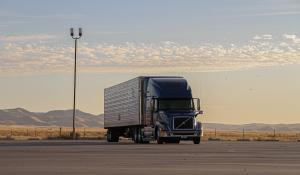
Eco-friendly lawns are patches of green space that have the potential to promote clean air, carbon sequestration, and serve as pollinator havens, but only when we abstain from unsustainable products and practices. As you nurture your backyard, watch out for these everyday climate culprits.
1. Lawnmowers
Lawnmowers are mini tractors packing powerful polluting potential. A gas-powered lawn mower emits 11 times more pollution in an hour than driving a new car for the same amount of time, according to the Environmental Protection Agency (EPA). According to reports from the EPA, running a gas-powered mower for just an hour would be equal to driving a Toyota Camry for five hours. For a leaf blower, an hour of use is equal to a 15-hour drive. That's because many gas-powered models of these machines run on dirty two-stroke engines.
Swap it:
Whenever possible, it’s best to use people-power over mechanization because of greenhouse gas emissions, and this goes for other machines like aerators, weed whackers, leaf blowers, and the like. Try a low-maintenance push mower for around $100. Plug in electric mowers can be found for under $200—or share the cost and use of a more decked-out style with a neighbor.
An even better option is to let your backyard grow into a Climate Victory Garden or meadow.
2. Peat
Peat is partially decomposed organic plant material clumped together in spongy form. Peat is the earliest stage of coal formation and when burned it releases energy, which technically makes it a fossil fuel. Peat is a common component in store-bought soil mixes, for use in gardens and with potted plants.
“Peat bogs are one of the largest carbon sinks we have on this planet and harvesting peat moss from century-old bogs releases carbon back into the atmosphere. Recapturing that released carbon, even with re-seeding efforts, won’t happen in our lifetime,” says Charis Smith, Green America’s climate and agriculture networks program manager.
Swap it:
While some gardeners and indoor plant enthusiasts struggle to quit peat because of how well it absorbs water, Smith notes that peat does not do anything critical for plant life. Instead, use alternatives like coconut coir and recycled paper fibers.
Compost also builds soil organic matter which vastly improves soil’s ability to retain water. Read about six popular composting options, and then get started with how, and what, to compost.
3. Fire Pits
You can have a cozy fire to gather around without the problems of burning wood, which releases carbon into atmosphere and it can have severely negative health effects. Burning wood releases pollution in the forms of CO2, carbon monoxide, particulate matter, and toxic volatile organic compounds. Older adults, and those with heart or lung diseases can be particularly sensitive to that pollution, according to the EPA.
The EPA recommends natural gas or propane burners, but those are not truly green, as the drilling and infrastructure to extract them creates methane emissions, which is 28 times more potent of a greenhouse gas than CO2.
Swap it:
Educated consumers have increased demand for eco-friendly burning options, which have lead to alternatives made from compressed sawdust waste, compressed cardboard, and even coffee grounds. These options are dryer than wood and burn hotter and longer. They are greener than burning a log in that they are reducing landfill waste, but the wood-based options still emit the same air pollutants as burning a log. Be sure to check that the alternative fuel you buy is recommended for fire pits, as some are only recommended for wood-burning or multi-fuel stoves.
4. Artificial Grass
For anyone with friends or family still clinging to their artificial turf, this is the summer to help them go green. Sellers of artificial turf often laud its eco-benefits like the elimination of over-watering, fertilizers, and pesticides, but these would not be in a healthy yard anyway. Turfs are made out of plastic like polypropylene, which is non-biodegradable. That means, at the end of its “life,” turf will end up in a landfill. Turf may seem desirable for people in hot climates, but it can get hot, too—30-50 degrees hotter than air temperature, so it might feel more like hot concrete or beach sand under your toes. Artificial grass used at the 2015 Women’s World Cup in Canada was even measured to be too hot for athletic use, even with shoes.
Artificial turfs rob insects and pollinators of a natural ecosystem and perhaps most concerning, there is no room for soil underneath layers of plastic to breathe. That means there are few, if any, living insects, bacteria, and other organisms maintaining the soil’s structure, meaning there’s also no carbon sequestration. As long as people, animals, and other living things need to eat, soil will be the foundation for our livelihood, and it must be protected.
Swap it:
5. Impermeable Surfaces
Impervious surfaces like sidewalks, patios, paved roads, rooftops, and even some very compacted soils can pose serious problems for the environment. These tough surfaces prevent rainwater from soaking into the ground and slowly flowing into local waterways. Instead, water flows rapidly into storm drains and streams, often bringing sediment and pollutants like fertilizers and oil with it into aquatic ecosystems. Heavier storms, which are increasing as a result of the climate crisis, can cause dangerous levels of flooding in communities with poor stormwater management.
Flooding and erosion of stream banks can damage hundreds of miles of habitat. A sudden increase in volume mixed with pollutants can drive down water quality and displace organisms in the water. The EPA reports that polluted runoff is one of the greatest threats to clean water across the country.
Swap it:
Use porous surfaces like gravel and explore installing a rain garden or rain barrel to help stormwater flow. If you’re doing a patio or driveway, ask your contractor about permeable pavers, which have a similar look to paved surfaces but let water reach the ground below. Also, make sure your gutter spouts are directed to grass or gravel instead of impervious surfaces.
If you're ready to get rid of your lawn entirely, or even just partially, consider turning your lawn into a meadow or a Climate Victory Garden!







